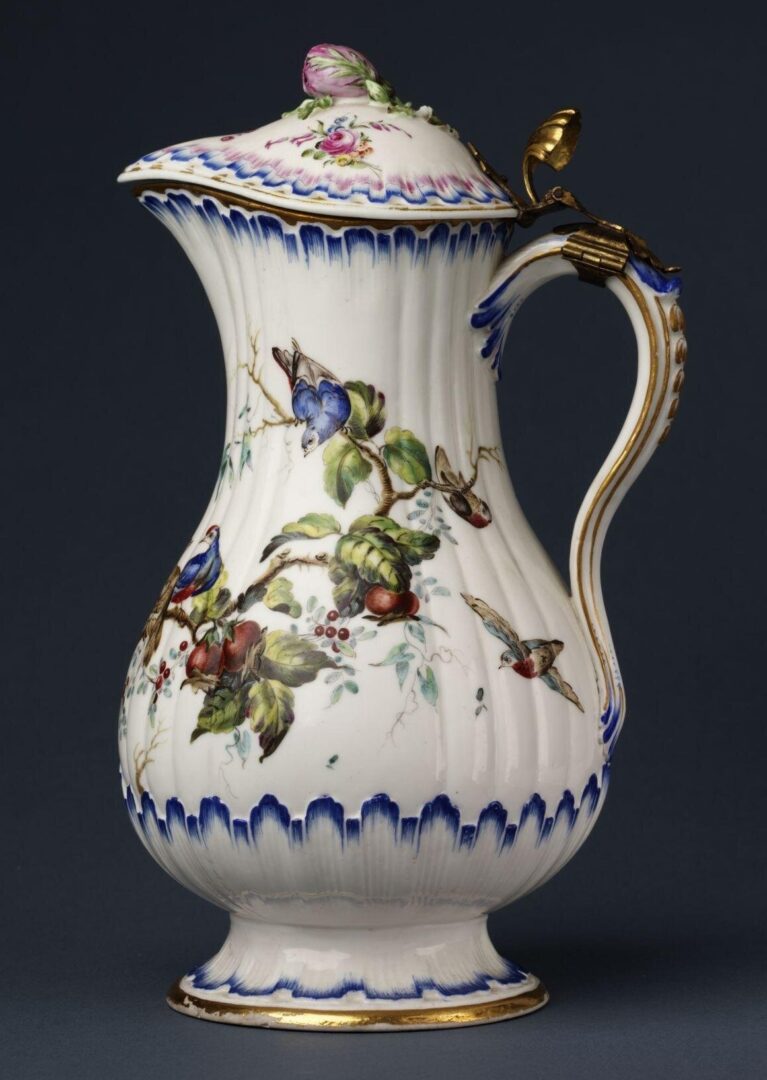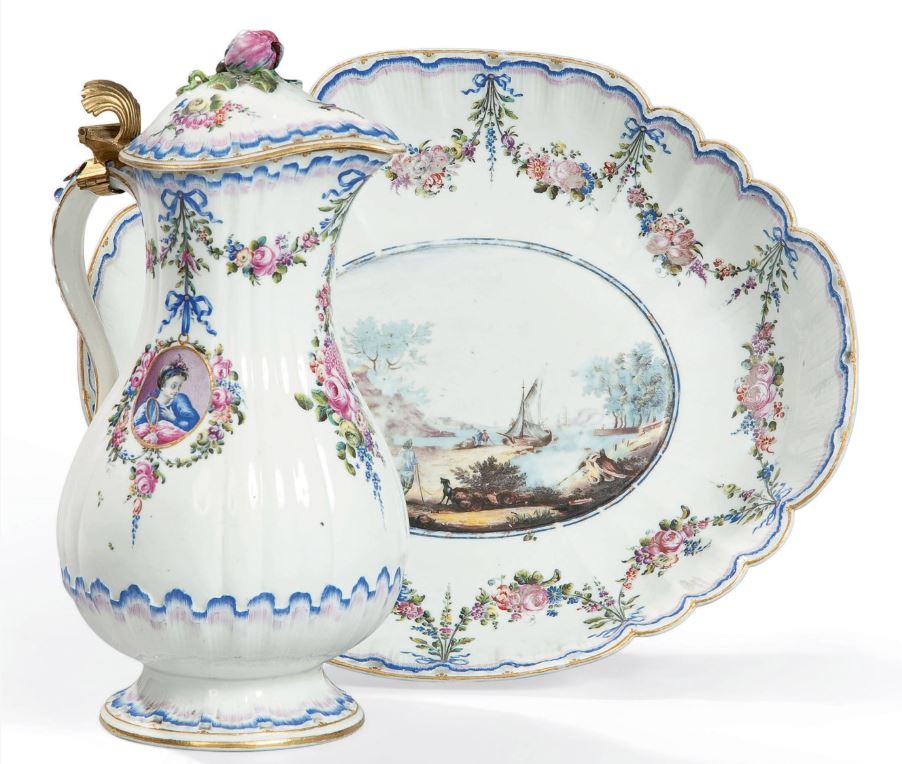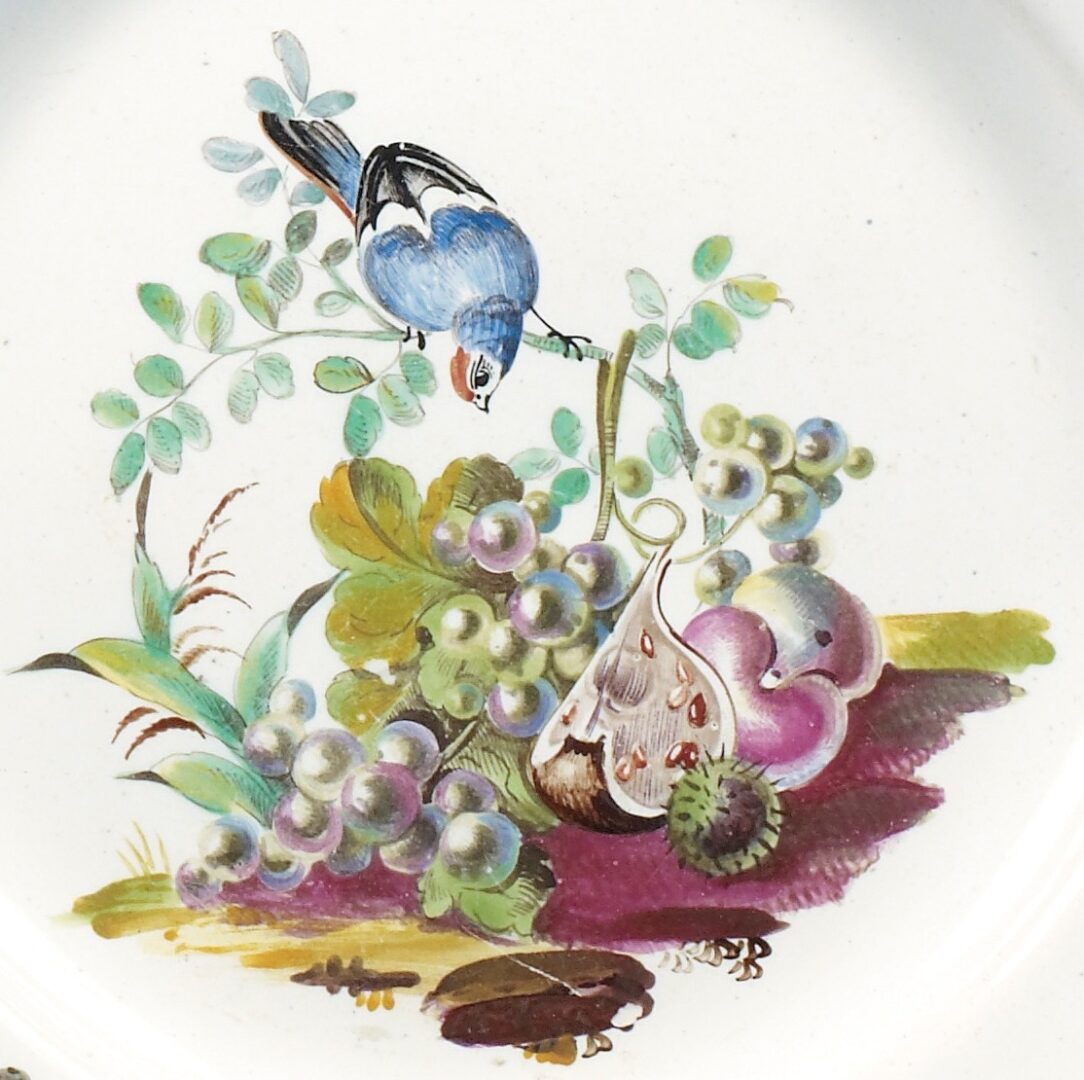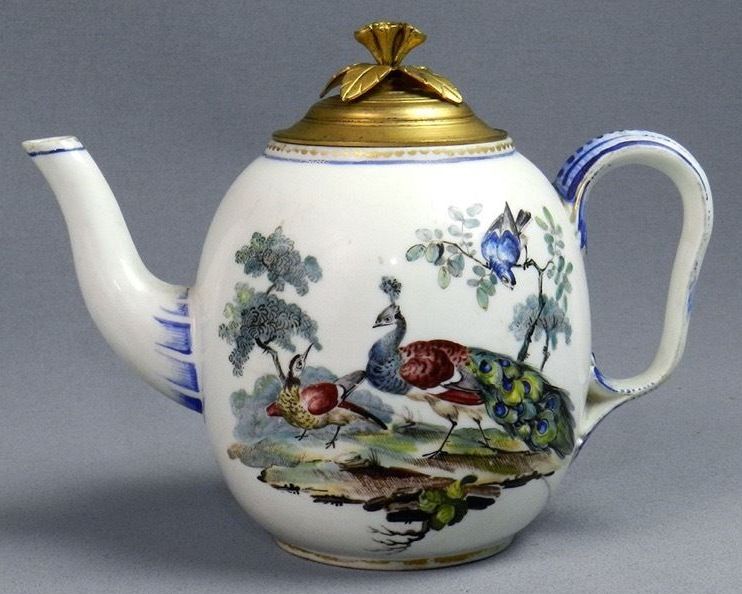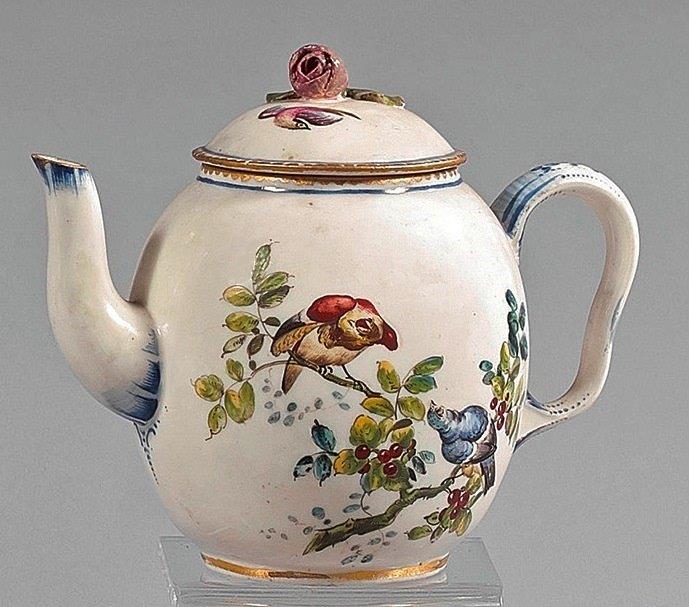2
Such an elegant ewer with basin (in French, aiguière et son bassin) was often found in a lady’s boudoir either on or near her dressing table. The ewer held water used for washing hands, etc. (ii) At left one sees the shape of the matching shallow basin that belongs to this set. A similar one would have belonged to the ewer above.
Moreover, this kind of bird also appears later, around 1775, when Duvivier had returned to Sceaux and was again painting his colorful birds on soft-paste porcelain that bore the S. X. incised mark on the base. (iv)
The black-comma claws are present, and the bird painting and vegetation are so similar to those seen on the teapots in 6 and 7a that either pot might well have originally belonged to this surviving part-coffee service kept in the Mennecy City Hall.
© Collection communale de Mennecy, France. Photo: Nicole Duchon
NOTES
(i) Macushla Baudis, “Tea Parties at the Museum – The collector J. H. Fitzhenry and his relationship with the V&A”, V&A Online Journal, Issue No. 2 (Autumn, 2009), p. 1. http://www.vam.ac.uk/content/journals/research-journal/issue-02/tea-parties-at-the-museum/ (accessed 27 March 2022).
(ii) The term derives from the old Provençal aiguiera, from the popular Latin aquaria, and from aqua, “water”. One sees such a Mennecy ewer and basin on the vanity table of one guest room of the Château Vendeuvre in the Normandy region of France, illustrated at this link https://servimg.com/view/19517119/14452 . This was the “country home” of Alexandre Le Forestier d’Osseville, the Count of Vendeuvre. See weblogs shown at
https://marie-antoinette.forumactif.org/t5023-en-normandie-le-chateau-de-vendeuvre .
(iii) See https://chjacob-hanson.com/duviviers-peacocks-and-a-peahen/ – blogpost of Jan. 16, 2018, and In the Footsteps of Fidelle Duvivier, pp. 18, 19.
(iv) These birds appear on a number of covered water jugs, sometimes also identified as pots à lait, which accompanied coffee services. See Footsteps, p. 20 (22); p. 21 (24); p. 36 (52a) and detail, p. 52 (52c).
(v) See https://chjacob-hanson.com/see-how-they-perch-more-duvivier-bird-clues/ – blogpost of June 24, 2018.
(vi) These Mennecy cups and saucers will be the subject of a future blogpost.

